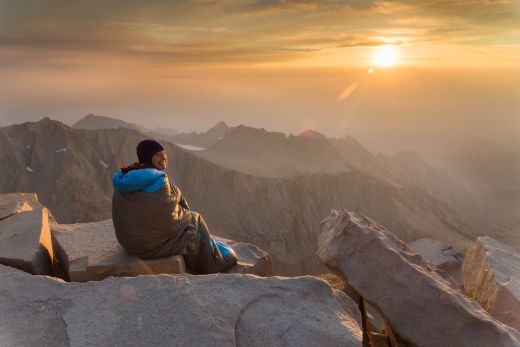Regardless of whether you’re sleeping rough on the trail or bedding down in the back of your adventure wagon, having the right sleeping bag is crucial to a good night’s sleep. And therein lies the challenge. With a multitude of shapes, features, and insulation types, picking a suitable sleeping bag isn’t as simple as looking for the right temperature rating. Every camper’s needs are different, and you’ll want to consider your priorities, sleeping habits, and budget when making this important gear decision. Fortunately, you have this handy guide to give you everything you need to know about sleeping bags and how to choose one.
Shape
Whereas the campers of yesteryear could only choose between a mummy and a rectangular sleeping bag, today there are several sleeping bag shapes, each with its own pros and cons.
Mummy
A sleeping bag’s primary job is to trap body heat, and bags that eliminate dead space do a much better job at retaining warmth. Traditional mummy bags have a tapered cut that narrows significantly towards the feet. This minimizes dead space and maximizes thermal efficiency. Mummy bags are also lighter and more compact than other shapes. In fact, the only downside to this style is that it restricts movement and can be problematic for side sleepers.
Ultralight mummies
Ultralight mummies are similar to traditional mummy bags but are made with thinner shells and fewer features. Hoods and full-length zippers, which are the norm on traditional mummy bags, are often absent on ultralight sleeping bags. These featherweight favorites also feature high quality down to bring the weight down, putting them in the same league as backpacking quilts.
Semi-rectangular
This style of sleeping bag tapers slightly towards the feet, making them warmer than rectangular sleeping bags and more roomy than mummy bags. These in-betweeners can be good options for car camping or backpacking if weight and warmth aren’t limiting factors, and they’ll be especially appealing to side sleepers who can feel confined in a traditional mummy bag.
Rectangular
With no taper to eliminate dead space, rectangular bags are not as thermally efficient as mummy sleeping bags. This makes these straight-sided bags really only suitable for summer camping, caravanning, and indoor use. On the plus side, rectangular sleeping bags allow more room for movement, and they can be fully unzipped into a flat quilt if the zip goes all the way around the bottom.
What about length?
The length of your sleeping bag should match your height, roughly. I say roughly because most manufacturers make their bags and quilts in only two or three sizes, and you’re unlikely to find a bag that is exactly 5’10” (if that is your height). If you are between two sizes, going with the longer size is usually safer. If such guesswork makes you uneasy, look for a brand that specifies the maximum sleeper height for their different sizes.
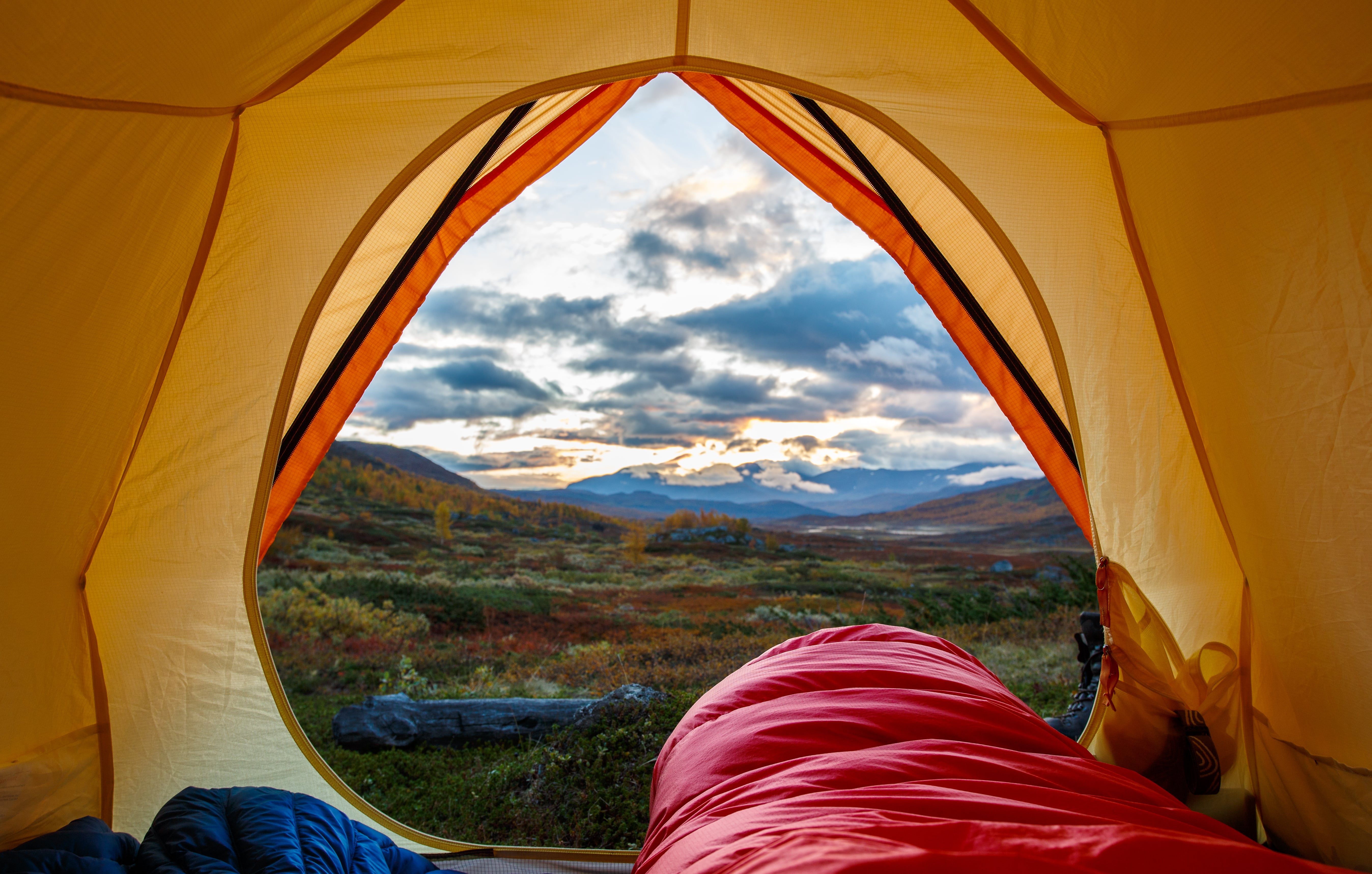
Note: Getting the size right (with minimal dead space) is more important if you are going to use a sleeping bag in colder temps.
Features
These are the most important features to look for in a sleeping bag.
Pad sleeve
Some sleeping bags, like the Big Agnes System Bags, have integrated pads sleeves to keep you and your sleeping bag firmly on top of the pad, where you belong. This can be a big advantage for restless sleepers who toss and turn and sometimes roll off their pads (the author included in this group).
Hood
Much of your body heat is lost through your head, and a well-designed hood can make a bag much warmer. This is also why you’re more likely to find hoods on bags with lower temperature ratings. For maximum heat retention, look for a hood with a drawstring closure that allows you to pull the hood around your face.
Draft tube
Most sleeping bags have an insulated draft tube (or tubes) running the length of the bag just inside the zipper to block air from outside the bag getting through the zipper. This is an essential feature for bags designed for colder temperatures.
Draft collar
A draft collaring helps prevent the loss of warm air through the top of your bag or quilt when you toss and turn at night (the ‘bellows effect’). Most mummy-shaped sleeping bags have an insulated tube inside the collar – usually secured in place with a flat clip. More minimalistic bags and quilts have only a drawstring for drawing the collar around the sleeper’s neck.
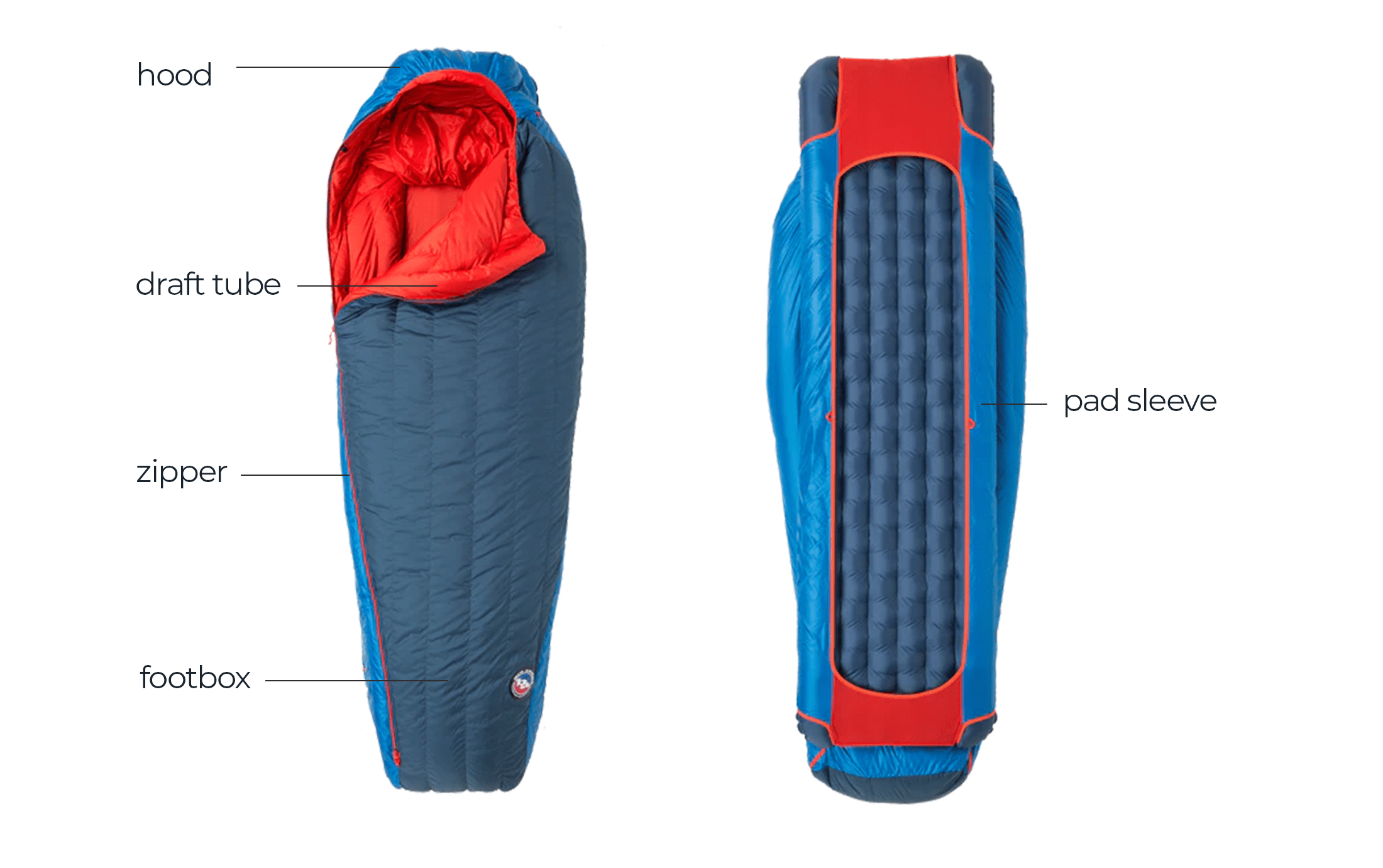
Zipper
The zipper on a sleeping bag can be on the right side or the left. To make your bag easier to unzip, choose a bag with the zip opening on the opposite side to your dominant hand. Zipper length and type also matters. Full zips allow for better ventilation than half zips, and a two-way zip can allow you to ventilate the footbox without unzipping the whole bag.
Footbox
A footbox can be tighter for greater warmth or wider for more wiggle room. The right footbox will give you just enough space while ensuring that your feet don’t press into the walls, squashing the insulation and causing cold spots. The footboxes on high-end sleeping bags are often reinforced to withstand wear and tear as well as to retain heat.
Shell
The type of shell fabrics used in a sleeping bag or quilt contributes to the warmth, weight, durability, and breathability of a sleeping bag. Ultralight bags are made with 10 to 20 denier fabrics while sleeping bags intended for general or heavy use are made with 30 to 80 denier polyester or nylon. Most are treated with a DWR finish, but this will only protect your bag from dampness, not rain.
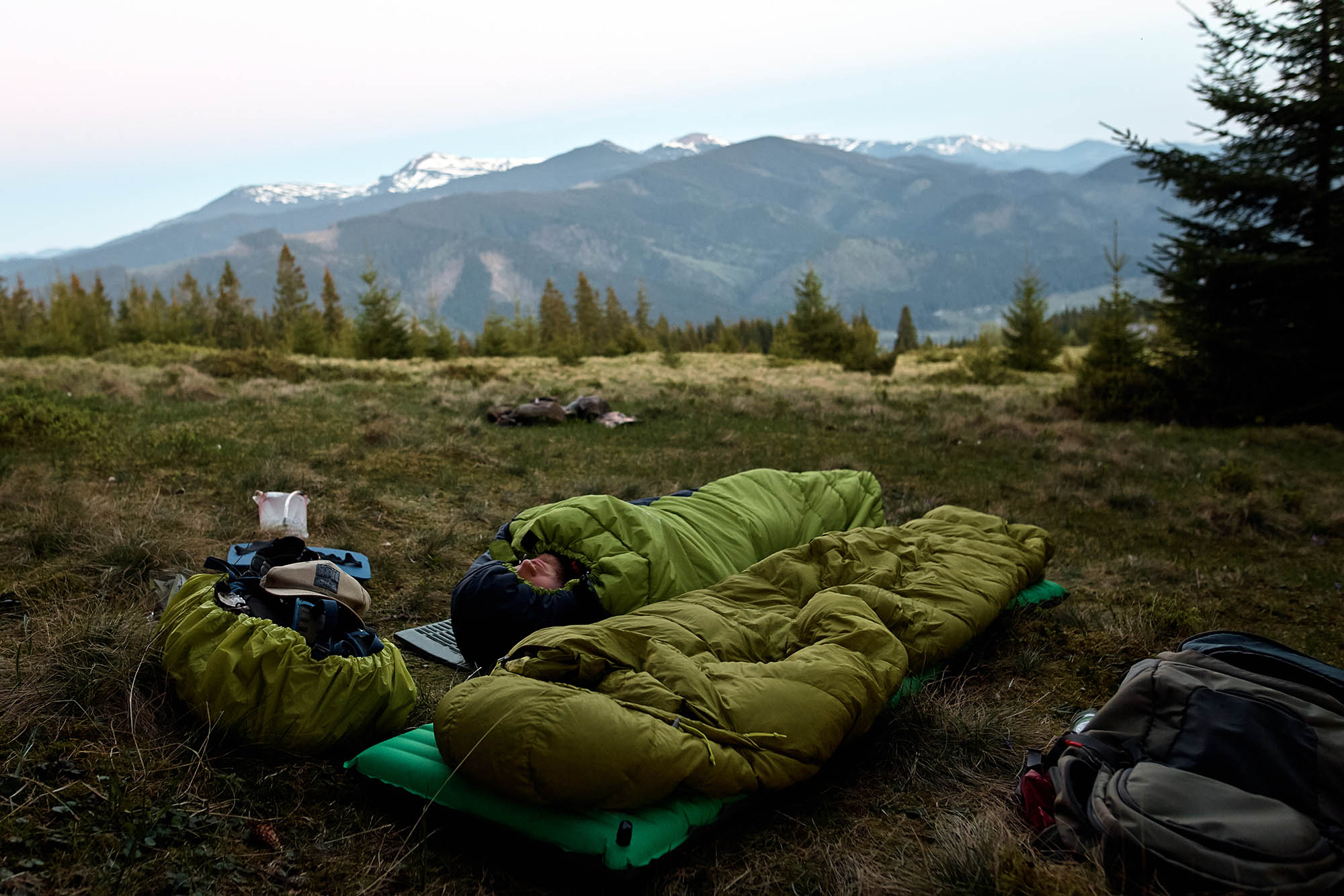
Insulation
Down and synthetic insulation each have their strengths and weaknesses, which means they perform well in some conditions and worse in others. Knowing which does what better can help you choose the best fill for your next sleeping bag.
Down
For compressibility and warmth, there’s no beating high quality down. No man-made fiber can match down’s loft or air-trapping properties, so it’s no mystery why this natural fiber is a firm favorite with outdoorsmen who value a high warmth-to-weight ratio.
Fill Power
Down quality is measured by fill power – that is how many cubic inches an ounce of insulation can fill at maximum loft. The higher the fill power, the warmer the down. Low qualify down has a fill power of 300 to 500, midrange down offers 500 to 700 fill power, and high quality down boasts 800 to 900 fill power. A sleeping bag with a fill power of 500 isn’t necessarily less insulating than a sleeping bag with 700 fill power down, but the less expensive bag will certainly have to be heavier to ensure the same level of warmth.
Water and down
The biggest drawback to down, besides price, is that it doesn’t retain its warmth when wet. Water causes down fibers to clump together and lose their loft. There are, however, hydrophobic coatings that help to preserve down’s loft when damp. These coatings can reduce the total warmth-to-weight ratio slightly, but that’s a worthwhile tradeoff for campers who can’t completely protect their sleeping bag from the elements. Note that even dry down will eventually still lose much of its loft when continually exposed to dampness, but it won’t lose its insulating properties nearly as quickly as untreated down.
Ethical issues
The other issue with down is that it’s an animal product, which raises questions about the treatment of the birds it’s sourced from. Choosing a product with the Responsible Down Standard label can help ensure that the down in that product is sourced ethically.
| Pros | Cons |
|---|---|
| Lightweight warmth | Loses insulating properties when wet |
| Compressibility | Expensive |
| Animal product |
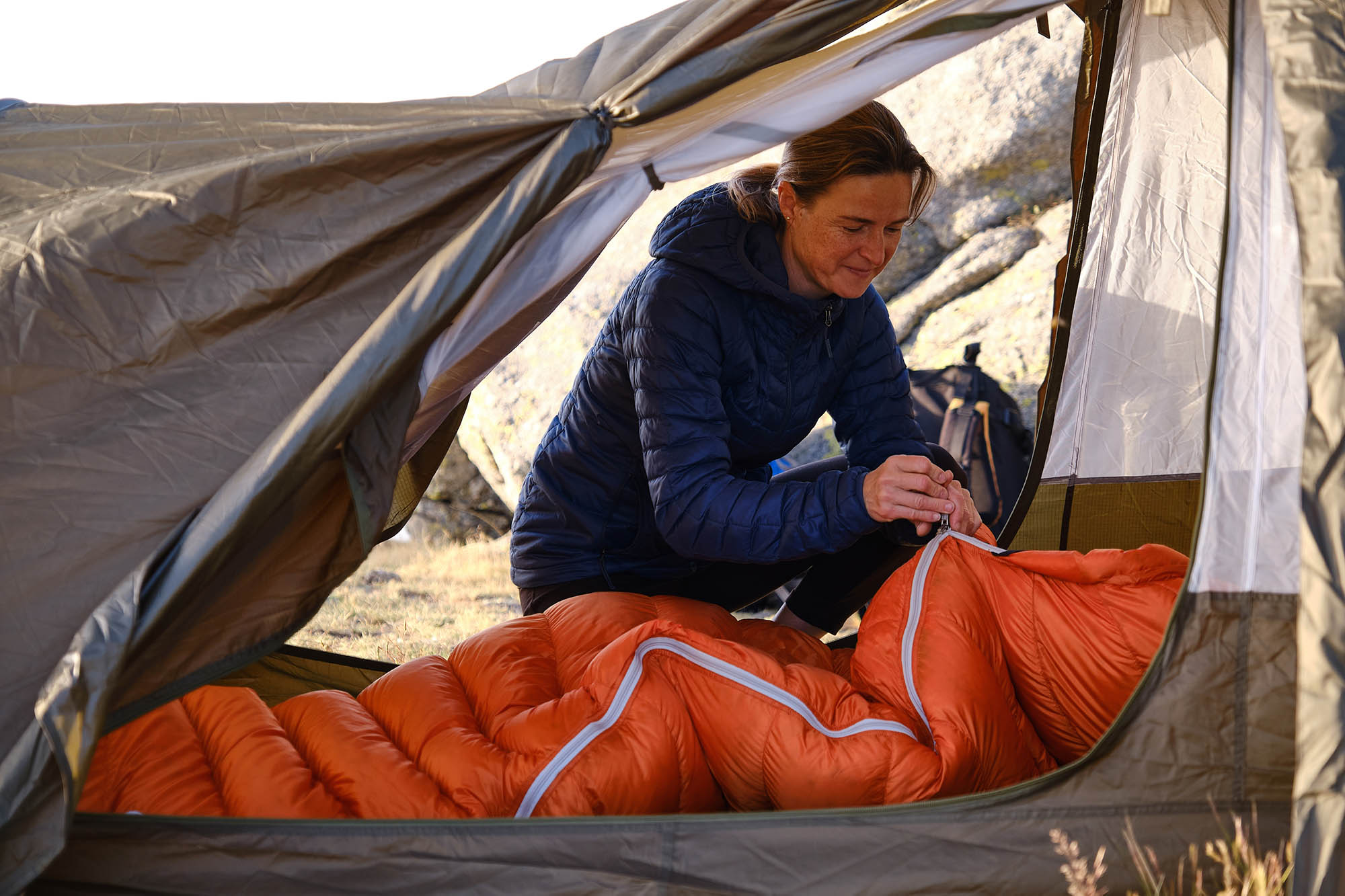
Synthetic
Synthetic fill like PrimaLoft, Thinsulate and Polarguard can’t match the warmth-to-weight ratio of high quality down. As a result, a synthetic sleeping bag or quilt are heavier and less compressible than down equivalents. That weight difference could be as much as a kilogram in the case of cheaper fills, or as little as 300 grams when high-end synthetic fill is compared to 800 fill power down (based on the insulation needed to fill a regular size sleeping bag).
Affordable allround performance
Synthetic insulation costs a lot less than down, and if budget is a major factor for you, the decision will be an easy one. However, if money is no object, things can get a little more complicated. Synthetic insulation retains some of their warmth when damp, and even though this isn’t a big advantage under most circumstances (You should do everything you can to prevent your sleeping bag from getting wet), this allround performance offers a degree of safety when you’re not certain that you’ll be able to keep your gear dry or be able to dry it out if it does gets wet.
Durability
The other downside to synthetic fill is that it isn’t as durable as down and won’t withstand restuffing quite as well as down. As a result, you will have to replace a well used synthetic sleeping bag sooner than you would a down bag. Expect to get two to four years from a synthetic sleeping bag, whereas a down bag can last as long as ten to fifteen years if well looked after. Both synthetic and down bags will last longer if stored uncompressed.
| Pros | Cons |
|---|---|
| Dries quicker | Heavier |
| Insulates when wet | Not as compressible |
| Less expensive |
EN/ISO temperature ratings
EN (European Norm) was the original standard by which sleeping bags were rated. Today that role is performed by the ISO (International Standards Organisation), but the new method used to test bags is almost identical to the original EN test. As a result, you can compare older EN-rated bags to newer ISO-rated bags. The most important and commonly cited EN and ISO ratings are ‘Comfort’ and ‘Lower limit.’
Comfort ratings
The comfort rating refers to the temperature at which a cold sleeper will feel warm and comfortable. On average, women feel the cold more than men, and most manufacturers describe the comfort rating as the temperature at which the average female can sleep comfortably. This is typically a few degrees warmer than the lower limit rating.
Lower limit rating
According to the EN standard, the lower limit is the temperature at which the average male can sleep for eight hours without waking. Not wanting to make generalization based on gender, the ISO defines the lower limit as the temperature at which a warm sleeper will still feel comfortable.
In the real world
ISO tests are performed using a heated manikin in a temperature-controlled lab. Your reaction to cold might differ to that of the manikin, and you definitely won’t sleep in a lab. In your campsite you’ll experience fluctuating humidity, wind, and precipitation. Even more importantly, the other components in your sleep system might differ to those used in tests (more about the implications of that in a minute). The only way to know for certain how a new sleeping bag is going to perform is to test it with the other components that will make up your sleep system. Ideally you’d do this during a one-nighter close to home and not your next thru-hike.
Other factors
Besides warmth and comfort (the freedom to sleep in a position that feels natural), there are a few other factors worth considering – things that are not directly related to the performance of a sleeping bag but which you should still give some thought to.
Weight
Your sleeping bag is likely to be one of the three heaviest and bulkiest pieces of gear you carry, and by paying extra for a quality down bag, you can shave up to two pounds from your base weight. How light you decide to go will largely depend on your budget and priorities. The lightest sleeping bags are filled with high quality down (800 and 900 fill power), which can push up the price of these bags by over $200 compared to synthetic-filled equivalents. But for ultralight backpackers and fastpackers, the weight saved by going this route is well worth the additional cost.
Packed size
Although not as important as weight, a small packed size can be important if you plan to use a smaller backpack – a general trend over the past decade. If this is a priority, down is a much better option than synthetic insulation. Down is far more compressible than synthetic insulation and packs down to less than half the size of synthetic fill. Again, down that has a high fill power (800 - 900) is more compressible than low quality down, which is still more compressible than synthetic insulation.
Durability
Down is the clear winner here as well. Due to the three-dimensional structure of down clusters, a down sleeping bag can be stuffed and restuffed hundreds or even thousands of times before it starts to lose its loft. In fact, a high quality down bag can last as many as 15 years even if used frequently. That’s three times longer than the three to four years that you are likely to get out of a synthetic-filled bag. Of course, to ensure that your sleeping bag (any sleeping bag) lives a full and happy life, you will have to store it uncompressed when not out on the trail and air it out frequently.
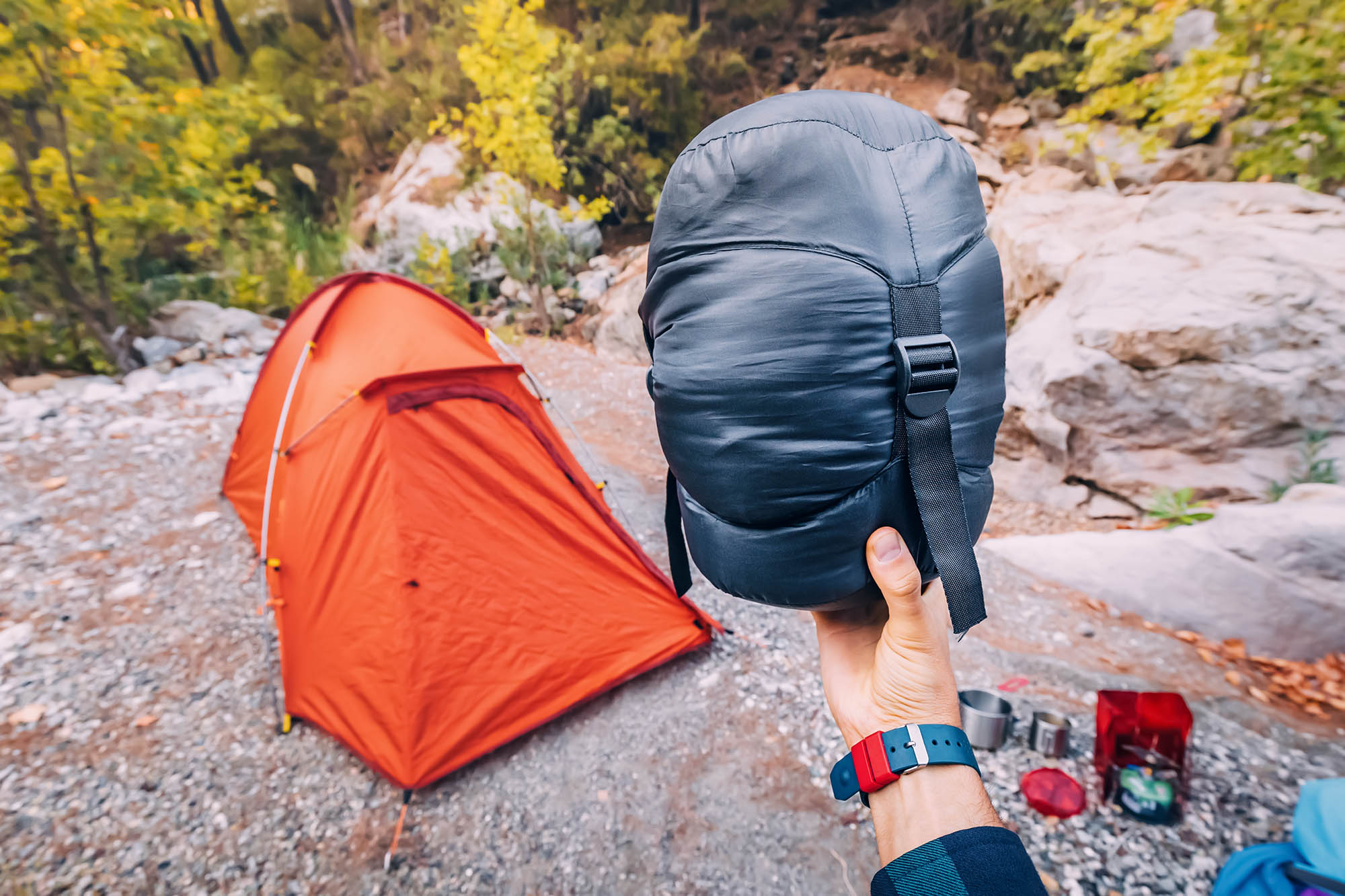
Use and care
To extend the life of your sleeping bag or quilt, it helps to treat it with a little TLC. Follow these usage and care tips, and you’ll get the most out of your gear.
Stuff your bag properly
Start by pushing the foot of the bag firmly into the bottom of the stuff sack. Sleeping bags should have their zippers partially closed. Continue to stuff in more of the bag as the air escapes through the top. This allows the bag to compress smaller while putting less strain on stitching. You can also use a stuff sack that’s slightly larger than necessary to make stuffing easier. Your bag can still be compressed further once inside your backpack.
Air out your bag daily
Damp sleeping bags are heavy, less insulating, and susceptible to mold, which can leave your bag with a funky smell. Every morning, turn your bag inside-out and hang it out to air and dry, even if that takes hours. Just don't leave a bag in direct sunlight for very long if you can avoid it. UV light can slowly degrade the fabric. In the case of non-stop rain, you might just have to settle for letting it lie inside-out in your tent.
Store uncompressed
Both down and synthetic fibers lose their loft when compressed for extended periods, and how you store your sleeping bag or quilt will affect its lifespan. When you arrive home from a trip, unpack the bag and air it out to make sure it's completely dry. Then, store it loosely in a large cotton or mesh sack. These are often included in the purchase of a sleeping bag but are also available separately.
Use a sleeping bag liner
Slipping a sleeping bag liner into your bag helps keep it clean, relieving you of the need to wash it regularly. A liner also adds about 5 to 15 degrees Fahrenheit to your bag's temperature rating, which is useful if you’re going to push its comfort rating. Liners can be cotton, silk, wool or polyester and are fairly lightweight so will dry much faster than a sleeping bag after washing.
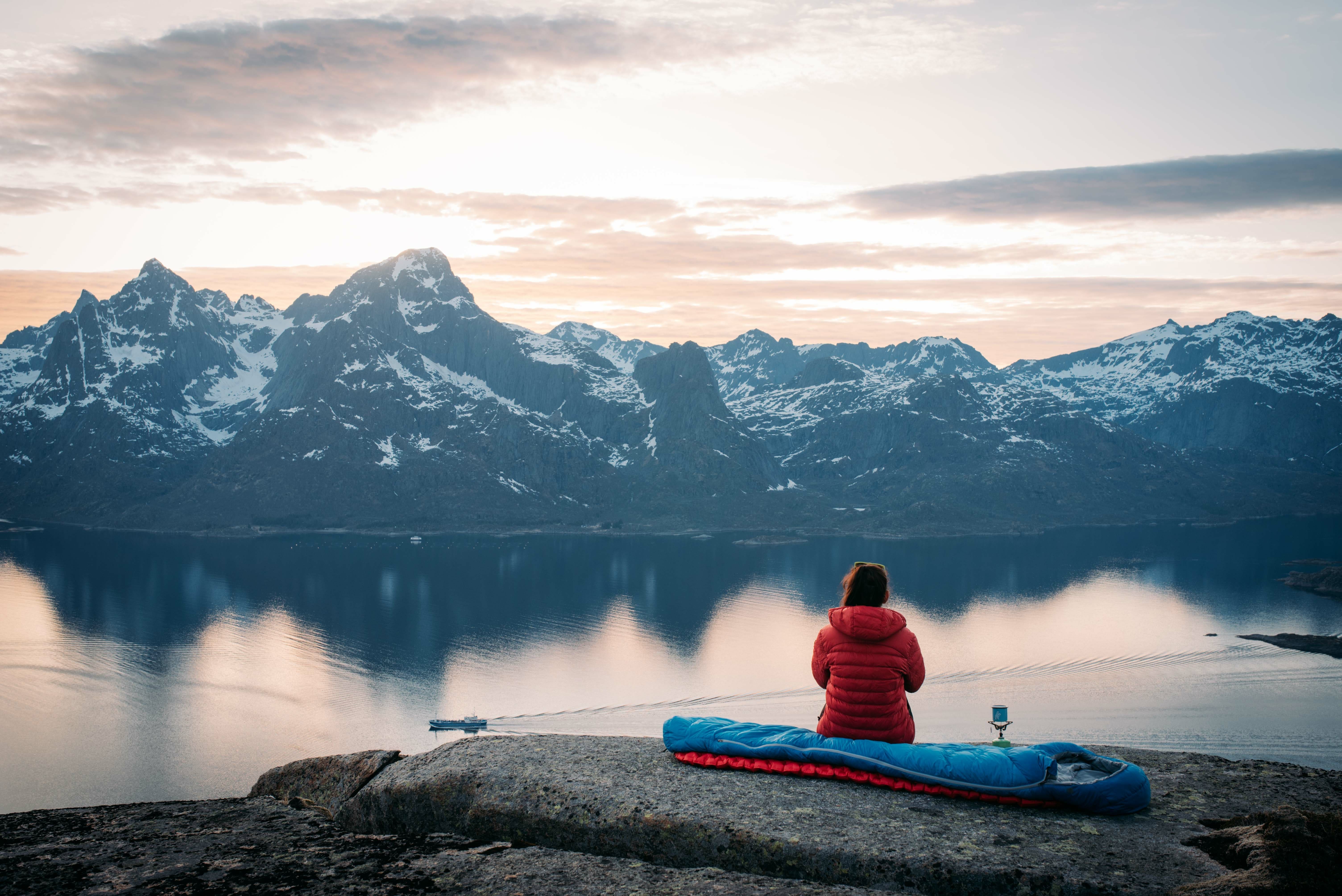
Learn how to dial in your sleep system
When choosing a new sleeping bag or pad, it’s important to consider the insulating properties of your sleep system as a whole (sleeping bag, pad and clothes) and calibrate your setup so that when you include all its components, it’s warm enough for the lowest temperatures you could face at night. For detailed instructions on how to do this, read my article on how to dial in your sleep system next.
